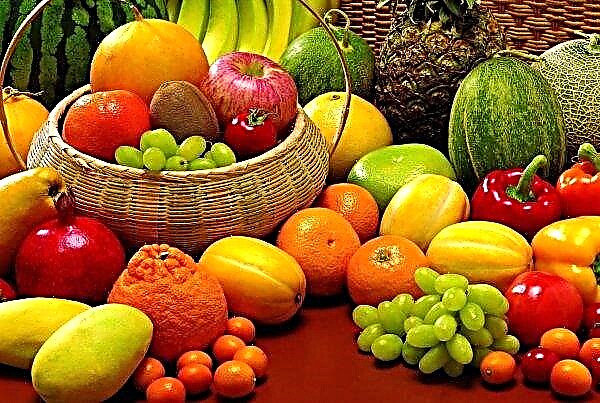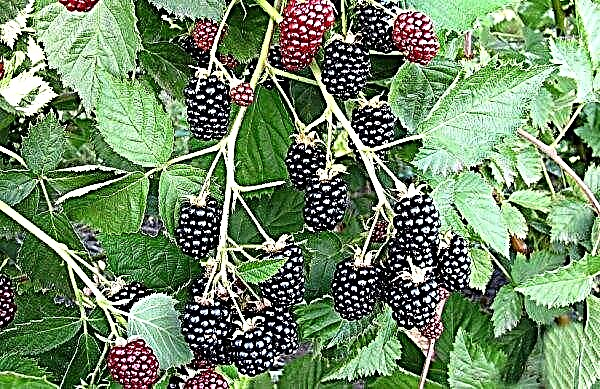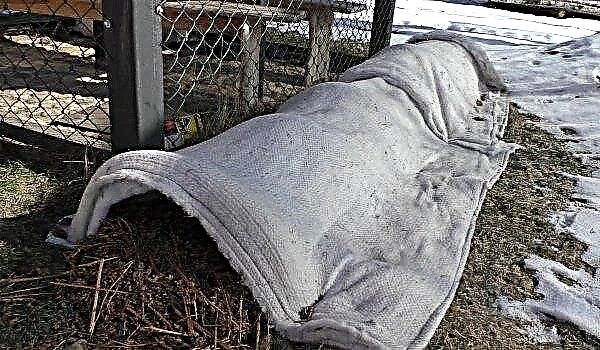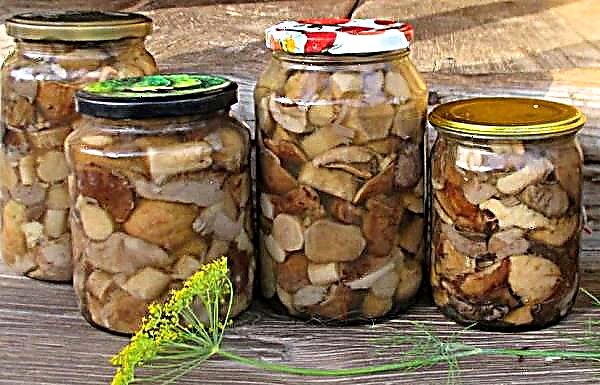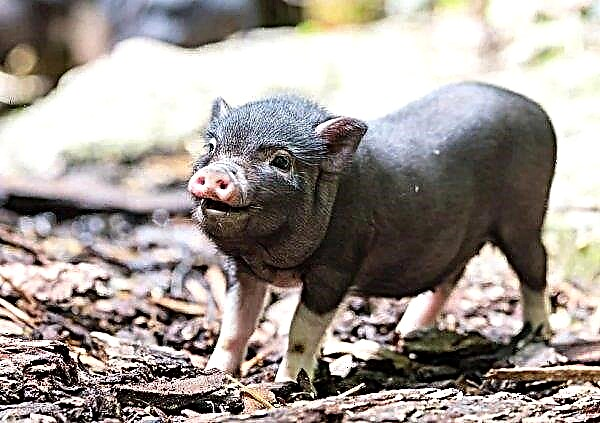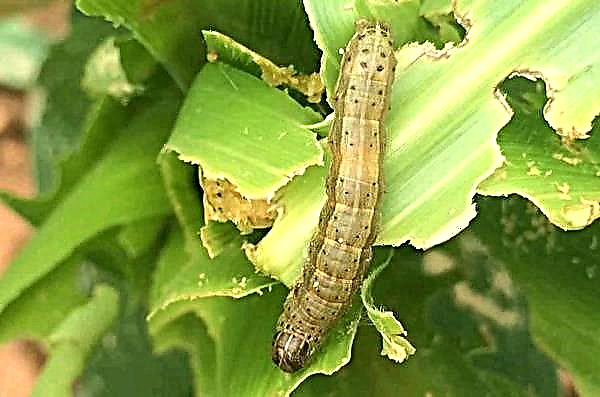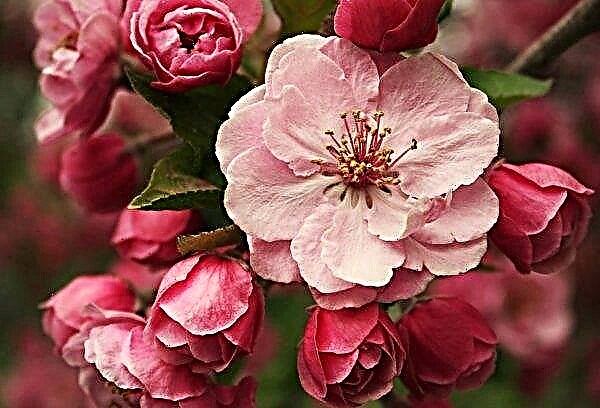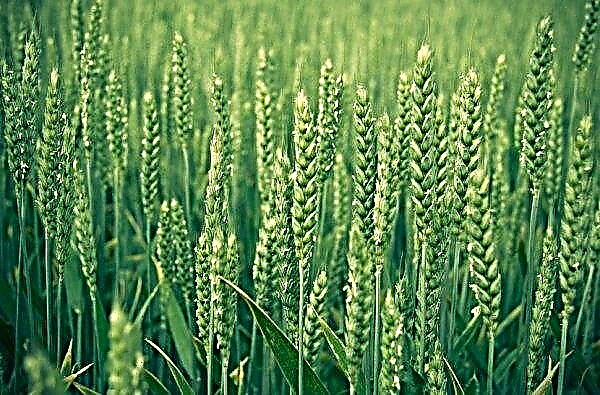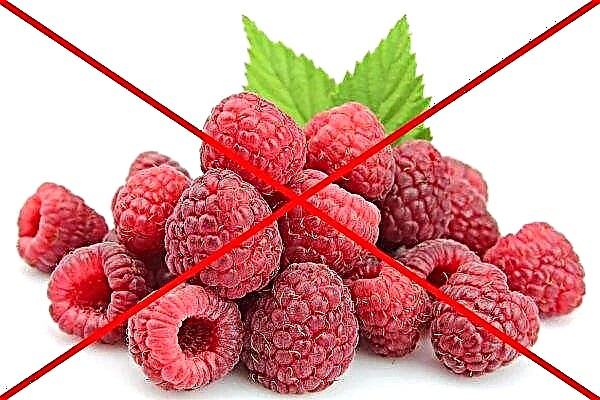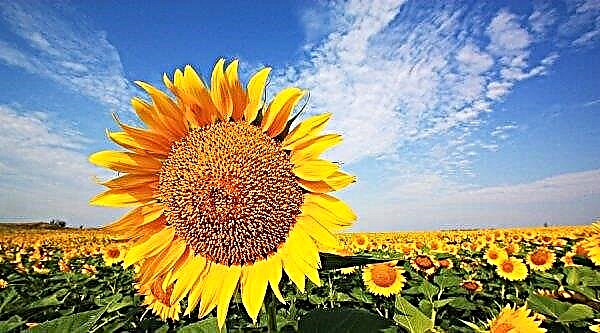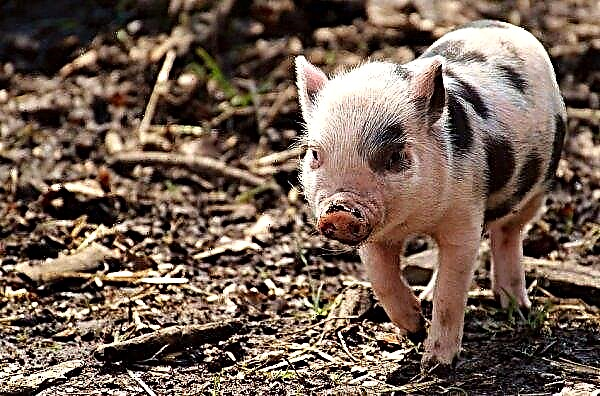In the list of agricultural plants there is such a crop as rye. What is this cereal, the history of its appearance and cultivation, how it looks and develops - these and other issues are discussed in detail below in the article.
What is rye
The culture belongs to the Cereals family. This herbaceous, annual or biennial plant is divided into two forms:
- winter ryewhich sowing is carried out in the fall, and in the spring it continues its development;
- spring culture - close up the seeds in the soil in the spring, matures in the year of sowing.

In our country, more than 40 varieties are grown that have been tested and approved by the State Commission. Among the most popular:
- Derzhavinskaya;
- Saratov;
- Vyatka;
- Chulpan.
In addition to the cultivated sowing form, there are still wild species - African, mountain and forest. The last two species are found in Russia.
Did you know? At the excavations of Scythian settlements dating from the 3rd c. BC, along with household items were found rye grains.
Botanical Description
The herbaceous plant has a well-developed root system of the fibrous type. The root processes penetrate to a depth of more than a meter, which allows the plant to extract moisture even in sandy soils.
A hollow, straight stem, on average, grows to 80–100 cm. The main part is “naked”, and under the ear there is a soft, short pile. As it grows, 5-6 internodes are formed on it. The leaves are long, lanceolate, alternating. The plate is attached to the trunk with the help of an “ear” covering the stem. In many varieties, the upper side is covered with a pile, which allows you to retain moisture.
Inflorescence is an ear with a complex structure. The length of the inflorescence is up to 15 cm, width is up to 1.2 cm. Its base is a tetrahedral axis, on the protrusions of which are flat scaly spikelets. Each one carries two flowers with a short spine up to 3 mm. Flower baskets have elongated anthers protruding above the spikelet. Pollination occurs with the help of wind.
The fruit is a long caryopsis consisting of many oblong grains in a hard shell. The kernels vary in size, color and shape. The length of the grain is 5–10 mm, the width is 1.5–3.5 mm, the shape is oval-round, oblong. The color of the outer shell is greenish-gray, gray-yellow, dark brown, yellow. Ripe rye looks almost the same as wheat, but they are easy to distinguish. The most characteristic discrepancies (for inexperienced farmers): the rye spike has a long and stiff, frequent spine, the seed is flatter; in wheat, it is short and sparse, and the grains are rounded.
Ripe rye looks almost the same as wheat, but they are easy to distinguish. The most characteristic discrepancies (for inexperienced farmers): the rye spike has a long and stiff, frequent spine, the seed is flatter; in wheat, it is short and sparse, and the grains are rounded.
Stages of development and biological features
Seed planted in the soil begins to form two tillering nodes: root and superficial. Seedlings of crops appear 5-8 days after sowing. When a third leaf appears on the stem, an internode begins to form from the first plate. Until the end of the vegetative period, up to six lateral branches of the stem are formed. The tillering period, on average, lasts 20 days.
Earing starts on 35–45 days after sowing. Inflorescence takes 7-12 days to form. The flowers that appear are bisexual, insects are not needed for pollination. The flowering period occurs at the beginning or end of May. Depending on the region, it lasts about a week.
Important! The period depends on the weather: when the temperature drops or high humidity, the anthers do not open, and the period is delayed.
Rye is one of the most seasoned cereal crops. She is not afraid of frosts to -21 ° C, and grains can germinate at -2 ° C. Short-term drought is not terrible: a long and branched root system is able to extract moisture from deep layers of the soil. The plant also has strong immunity, it is rarely exposed to diseases. After flowering, a cereal spike is formed; it takes about 2–2.5 months to fully ripen. The young plant is colored with a bluish-green tone - both the stem and foliage. As it develops, the plant acquires a yellowish color. Fully ripened cereal does not have green color.
After flowering, a cereal spike is formed; it takes about 2–2.5 months to fully ripen. The young plant is colored with a bluish-green tone - both the stem and foliage. As it develops, the plant acquires a yellowish color. Fully ripened cereal does not have green color.
Origin and distribution of the plant
There is still no single harmonious version about the origin and cultivation of rye, only a mass of assumptions and hypotheses. Thanks to archaeologists and found artifacts (letters, murals, fossils) it is known for certain that the ancient Egyptians, the peoples of Asia and India knew and cultivated the culture already in the 4th century. BC.
Most scientists agree that sowing cereals appeared on the territory of modern Iran and Turkey. The plant was eradicated as a weed, clogging the crops of wheat and barley.
Over time, farmers noted the plant's resistance to cold, the ability to grow on sparse soils, in the mountains. Since the culture vegetated almost without supervision, it did not require special participation of the ancient farmers and survived where wheat and barley massively died, they began to cultivate it. Due to its resistance to external factors, the cost of the crop was low. Products from rye grains could afford all sectors of the population, unlike wheat products.
Today, rye is grown in large volumes almost throughout the Northern Hemisphere, namely:
- North America;
- Canada;
- Scandinavian countries;
- Europe and the Baltic countries;
- Russia;
- China.
Chemical composition and beneficial properties
Rye has a rich chemical composition and at the same time low calorie content, which makes it a valuable dietary product. The content of useful elements (in% of the daily norm):
| Vitamins | Minerals | Acids | Other substances |
| thiamine, B1 - 29.3 | potassium - 17 | Omega 3 - 14.4 | carbohydrates (pectin, fiber, sucrose) - 20.8 |
| riboflavin, B2 - 11.1 | silicon - 283.3 | Omega-6 - 18.3 | phytosterols - 190.5 |
| pantothenic set, B5 - 20 | magnesium - 30 | irreplaceable (valine, phenylalaline, isoleucine, threonine) - 17 | |
| pyridoxine, B6 - 20.5 | phosphorus - 45.8 | interchangeable (glutamine, proline) - 13.8 | Text 20 |
| folates, B9 - 13.8 | iron - 30 | Text 24 | |
| tocopherol, E - 18.7 | cobalt —76 | ||
| biotin, N - 12 | Manganese - 138.5 | ||
| niacin, PP - 17.5 | copper - 46 | ||
| molybdenum - 25.7 |

Given the rich content of useful elements, rye is certainly healthy and should be present in the diet. Nutritionists recommend eating rye bread to people with increased body weight, because it is low-calorie in comparison with wheat products. In addition, the product helps to remove toxins and bad cholesterol from the body, which also contributes to weight loss.
- Other useful properties:
- digestion improvement;
- decreased acidity of gastric juice;
- assistance in the work of the enzymatic system;
- normalization of blood glucose levels;
- support for the work of the heart muscle;
- strengthening blood vessels;
- improvement of the hormonal and reproductive system;
- strengthening immunity.
How is rye grown
In Russia, winter varieties are mainly grown, spring varieties are more suitable for the northern regions (Siberia, the Urals). Varietal seeds with a germination rate of at least 95% are selected for sowing. Before planting, the seed material is etched in fungicides (TMTD) in order to prevent diseases.
 3-4 weeks before sowing, soil cultivation is carried out: plowing with harrows or plane cutters, depending on the predecessors.
3-4 weeks before sowing, soil cultivation is carried out: plowing with harrows or plane cutters, depending on the predecessors.
Sowing dates - August - October: in the north - earlier, in the south - later. The depth of embedding into the soil is 2–5 cm, depending on the structure of the soil (on loose soil it is more superficial). The consumption of seeds per 1 ha is 4-6.5 million units.
Important! It is not recommended to grow cereal after legumes. They oversaturate the earth with nitrogen, which destroys the seedlings of rye.
After sowing care:
- Rolling, i.e. compaction of the soil for better contact of the seed with the ground, which increases germination.
- The application of phosphorus-potassium fertilizers - will strengthen the protective properties of seeds, will allow to winter well.
- In winter, with a small amount of rainfall, activities are held to detain snow in the fields. They place shields, brushwood, apply backstage steam.
- In the spring, harrowing is carried out immediately after the snow melts.
- In the period of tillering, before the culture begins to bloom, treatment with insecticides and fungicides against insects and diseases is required.
Harvesting begins when the grain reaches the stage of wax ripeness, that is, it has already turned yellow, but the hard shell surrounding the core still contains a certain percentage of moisture. If you tighten the harvest, the seeds will begin to crumble.
Culture application
Cereal grains are ground into flour, from which bread and diet rolls are baked. Now rye bakery products are considered healthy and less high-calorie than wheat flour. In ancient times, it was the food of the poor, it was considered coarse and heavy.
Did you know? Pliny the Elder, a statesman of Ancient Rome (I century BC) said that eating rye bread can only be experienced by wild hunger. And in the countries of the Ancient East, the plant was considered a weed at all, in the Persian language its name is "dou-dar" - which litter crops.
Bread kvass is one of the most popular drinks among the Slavs, and from brown bread it is also useful, less calorie. In addition to flour for baking, starch is produced that is not inferior in quality to the potato analogue. Alcohol is obtained from grain for the manufacture of strong alcohol or for medical use. In Germany and Western Europe, rye beer is popular.
Cereal crops are used to make feed for livestock. Germinated seeds are given to the poultry. The plant is an excellent siderat, after which the soil structure improves, weeds are suppressed. In the past, straw was put on the roof in dwellings; in some villages it is still used in the construction of farm buildings. The material is cheap, affordable and fairly durable.
Rye is a cereal crop, which occupies one of the main places in the agricultural industry. Products from grain contain many useful elements necessary for the body.Important! Rye crops scare away many pests, so often the culture is used as a precursor for growing agricultural plants.

